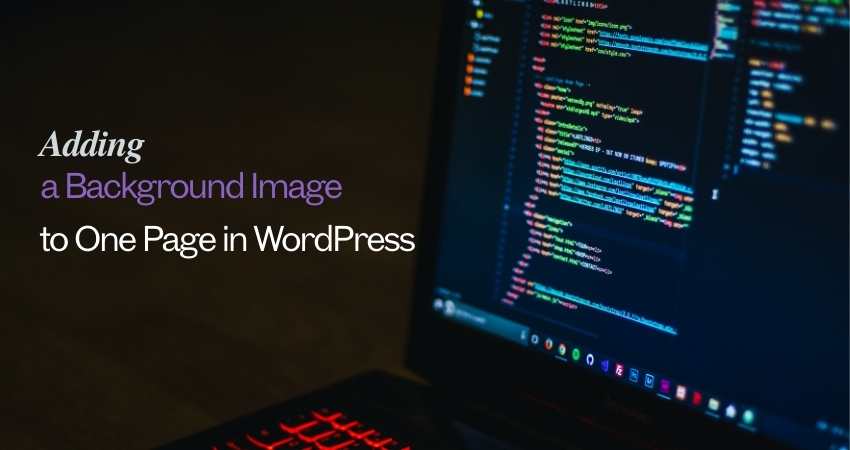Adding a background image to just one page in WordPress can make your content more engaging. Whether you want to showcase a special offer, enhance the design, or create a unique style, adding a background image helps your page stand out.
In this guide, I’ll walk you through the steps to do this without affecting other pages.
Steps to Insert a Background Image on One Page Only
Step 1: Select the Page to Add the Background Image
- Log in to your WordPress dashboard.
- Go to Pages > All Pages.
- Find the page where you want to add the background image.
- Click Edit under the page name.
This opens the page editor, where you’ll work on adding the background image.
Step 2: Find the Page ID
If you want to apply a background image only to a specific page using CSS, knowing the page ID can help. Here’s how you find it:
- Hover over the page name in Pages > All Pages in the WordPress dashboard.
- Look at the link preview in the bottom-left corner of your browser.
- The URL will have something like post=123.
- Note down the number (123 in this case). This is the page ID.
Step 3: Upload Your Background Image
Now, you need to upload the image you want to use.
- In the dashboard, go to Media > Add New.
- Click Select Files and upload the background image.
- Once uploaded, click the image to open it.
- Copy the File URL from the right-hand side. You’ll need this link to insert the image using CSS.
Step 4: Add CSS to Insert the Background Image
We’ll use custom CSS to apply the background image to your chosen page. You can add CSS directly through WordPress or your theme’s additional CSS option.
Option 1: Use WordPress Customizer
- Go to Appearance > Customize in your dashboard.
- Click Additional CSS from the menu.
Option 2: Use a Page Builder Plugin. Plugins like Elementor or Live Composer allow you to add custom CSS directly inside the page settings.
Here’s the CSS code you’ll need:
/* Add background image to a specific page */
.page-id-123 {
background-image: url(‘https://yourwebsite.com/wp-content/uploads/your-background-image.jpg’);
background-size: cover;
background-position: center;
background-repeat: no-repeat;
min-height: 100vh;
}
- Replace 123 with your page ID.
- Replace the image URL with the File URL you copied earlier.
Step 5: Save and Preview the Changes
- After adding the CSS code, click Publish in the WordPress Customizer or Save Changes if using a plugin.
- Visit the specific page to ensure the background image appears correctly.
Optional: Customize the Background Image
You can tweak the CSS further to suit your needs. Here are some CSS properties you can try:
Opacity: Add transparency to the image.
.page-id-123 {
background-color: rgba(0, 0, 0, 0.5); /* Black overlay */
}
Fixed Background: Keep the image in place while scrolling.
.page-id-123 {
background-attachment: fixed;
}
Padding: Adjust the space around the content if needed.
.page-id-123 {
padding: 50px;
}
Step 6: Troubleshooting Common Issues
If the background image doesn’t show, try the following fixes:
- Clear the cache. If you use caching plugins, clear them and reload the page.
- Check the image URL. Make sure the link is correct and accessible.
- Use the right CSS selector. If .page-id-123 doesn’t work, check if the page uses another class, like .home or .front-page.
- Test on different devices. Make sure the background image looks good on both desktop and mobile screens.
Conclusion
If you know how to code CSS, adding a background image to just one page is very simple. This approach allows you to create a unique look without changing the design across your site. Now, go ahead and try this on your WordPress page!
With this step-by-step guide, you can make your pages visually appealing and focused. This technique works well for unique campaigns, event pages, and any time you need a one-page standout design.
